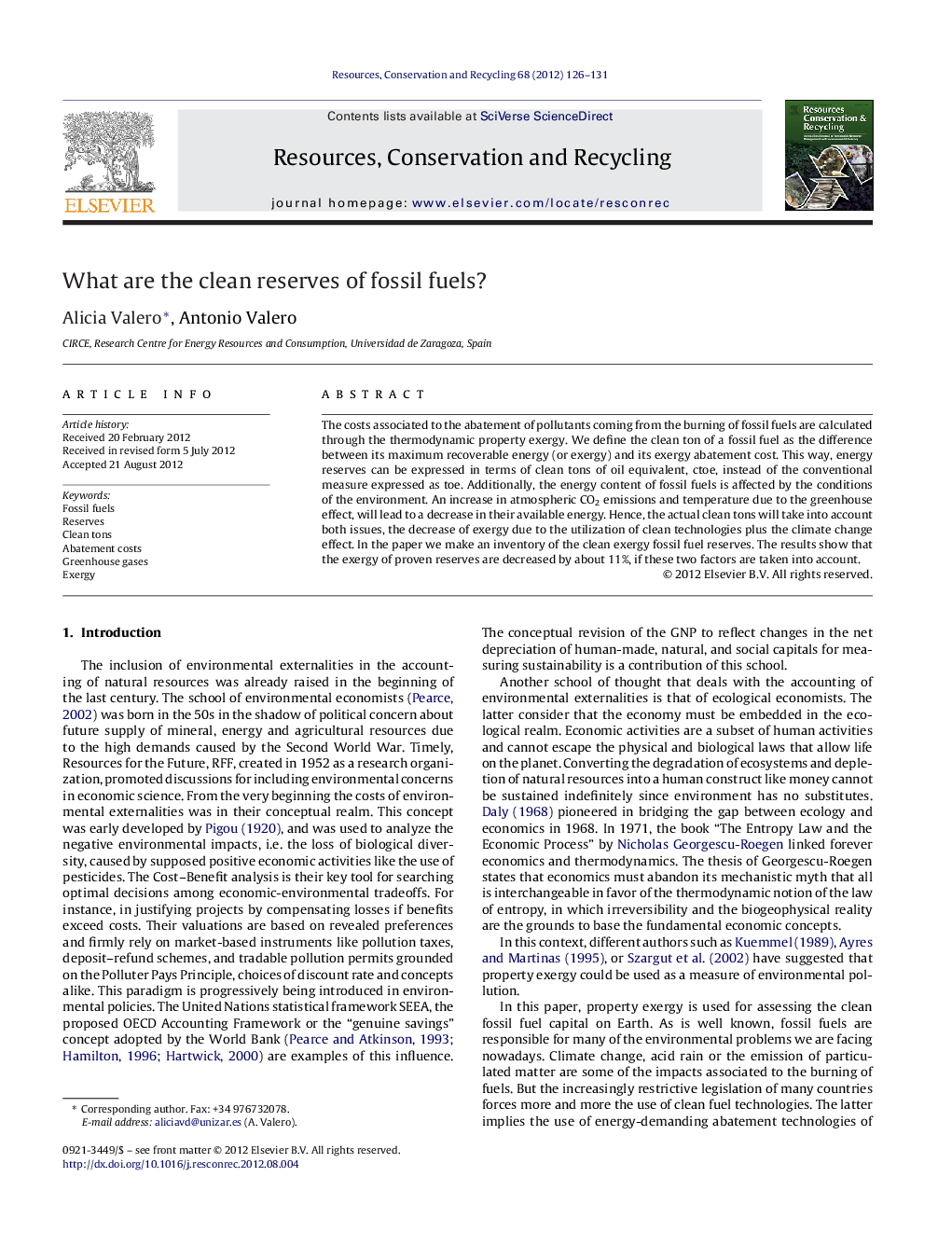| Article ID | Journal | Published Year | Pages | File Type |
|---|---|---|---|---|
| 1063249 | Resources, Conservation and Recycling | 2012 | 6 Pages |
The costs associated to the abatement of pollutants coming from the burning of fossil fuels are calculated through the thermodynamic property exergy. We define the clean ton of a fossil fuel as the difference between its maximum recoverable energy (or exergy) and its exergy abatement cost. This way, energy reserves can be expressed in terms of clean tons of oil equivalent, ctoe, instead of the conventional measure expressed as toe. Additionally, the energy content of fossil fuels is affected by the conditions of the environment. An increase in atmospheric CO2 emissions and temperature due to the greenhouse effect, will lead to a decrease in their available energy. Hence, the actual clean tons will take into account both issues, the decrease of exergy due to the utilization of clean technologies plus the climate change effect. In the paper we make an inventory of the clean exergy fossil fuel reserves. The results show that the exergy of proven reserves are decreased by about 11%, if these two factors are taken into account.
► Fuel abatement technologies decrease the available energy (exergy) of fossil fuels. ► GhG emissions decrease also the exergy of fossil fuels. ► The clean reserves of fuels are studied as a function of both factors. ► Results show a decrease of about 11% of the available energy of proven reserves.
